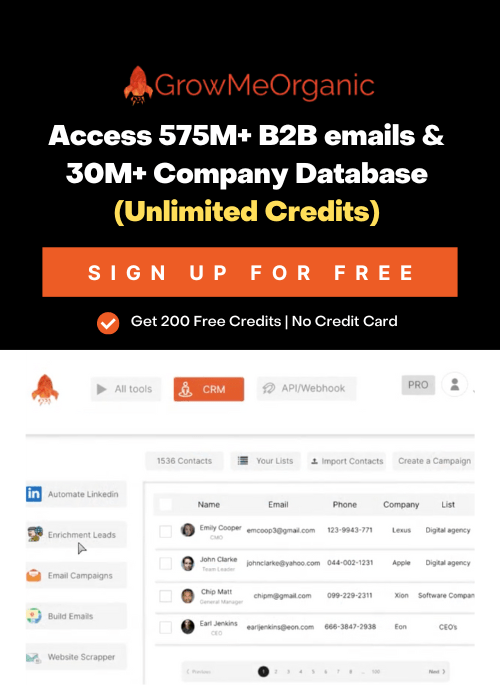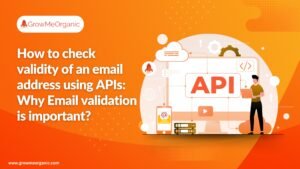Hitting the milestone of 100 customers is critical for startups and small businesses looking to grow and scale. It represents a crucial validation of the business idea and the ability to generate revenue and attract customers.
This article will explore precisely how to reach this crucial milestone through proven saas sales process and saas lead-generation strategies.
Define Your Ideal Customer

Defining the ideal customer is essential for startups as it allows them to tailor their marketing efforts to a specific audience and increase the likelihood of conversion. By understanding their ideal customer’s needs, behaviors, and pain points, startups can create targeted messaging and offers that resonates with their audience.
For example, Airbnb initially targeted budget travelers. Still, after analyzing data and customer feedback, they realized that their ideal customer was looking for more unique and authentic travel experiences. This led to a pivot in their marketing strategy, focusing on the “Live Like a Local” concept, which resonated well with their ideal customer and contributed to their rapid growth.
As a startup, you must be humble enough to realize that your initial assumptions might be wrong. Let the data guide you.
Collect the Right Data

When a company is starting, it can be challenging to determine which Key Performance Indicators (KPIs) are most important. One way to identify the most relevant KPIs is to define the company’s business objectives and determine which metrics most closely align with those goals. These metrics are vitally important because they help inform your overall digital marketing strategy. Knowing what numbers you want to hit makes it easier to find the right actions.
To dig deeper, companies can also analyze data from similar businesses or industries to identify common KPIs. As the company grows and gains more data insights, it can refine its KPIs to reflect its business needs and goals better. It’s important to note that the important metrics for you will vary depending on the industry, business model, and growth stage.
KPIs should change over time: an example.
Let’s consider a hypothetical B2C e-commerce startup. Initially, the startup’s primary objective is likely to acquire new customers and increase sales. The company might initially focus on website traffic, conversion rate, and average order value KPIs.
As the company grows, it may shift its focus to customer retention and engagement. They might start tracking KPIs such as customer lifetime value, churn rate, and customer satisfaction score.
As the company gains insights from its data, it can refine its KPIs to reflect better its business goals, such as expanding its product line or entering new markets.
5 Strategies to Generate More Qualified Leads
Many startups, in the beginning, approach leads with the mindset that more = better. This isn’t necessarily true, as an abundance of unqualified leads won’t result in more sales.
According to Attrock, by targeting and nurturing qualified leads, businesses can optimize their resources and avoid wasting time and money on leads that are unlikely to convert. Use these strategies to generate better-qualified leads for your business.

1. Automation Tools
In 2024, if you’re not taking advantage of automation to streamline your saas sales process, you’re handicapping yourself. Automation helps save time and boosts your lead-generation efforts by taking care of repetitive tasks and streamlining the process of identifying, nurturing, and converting leads. Here are some examples of effective automation tools and how to use them:
1. Customer Relationship Management (CRM) Systems:
CRM systems are software applications that manage a business’s interactions with current and potential customers. They can help businesses automate lead tracking and manage customer data more efficiently. Salesforce, HubSpot, and Zoho CRM are some popular CRM systems.
2. Email Marketing Automation:
Emails are so last decade; you’re correct. However, they’re easy, and the ROI is still ridiculously high. To incorporate email campaigns into your overall digital marketing strategy, use email marketing automation tools like Mailchimp, Constant Contact, and Drip. These tools help businesses to automate their email campaigns based on predefined triggers and rules. This saves time and dramatically increases efficiency in lead nurturing.
3. Social Media Management Tools:
Any company serious about social media uses management tools like Hootsuite, Buffer, or Sprout Social. According to Forbes, using a social media scheduling tool is one of the top tips for social media marketing as a solopreneur. They help you organize and systemize social media campaigns across multiple accounts and platforms while tracking engagement metrics and identifying potential leads.
4. Chatbots:
Chatbots automate customer interactions and provide instant responses to customer inquiries, which improves lead conversion rates and customer satisfaction. Chatbot platforms like ManyChat, Tars, and MobileMonkey can help businesses create and manage chatbots effectively.
2. Lead Magnets
Benefits provided by businesses to potential customers in exchange for their contact information or other necessary information are known as lead magnets. These incentives can take many forms, such as ebooks, whitepapers, webinars, free trials, and discount codes.
Successful lead magnets are those that offer value to potential customers and align with their interests or pain points. The key to a successful lead magnet is to offer something that potential customers find valuable enough to exchange their information for.
3. Product Sampling
Product sampling can be a highly effective lead generation and conversion strategy, allowing potential customers to try a product before committing to a purchase. Sampling can increase brand awareness, generate buzz, and encourage customers to purchase.
Successful product sampling campaigns offer a targeted and relevant audience with a high-quality sample that they will find valuable. For example, beauty companies may offer free samples of their latest skincare line in exchange for email sign-ups or social media followers.
To implement a successful product sampling campaign, businesses should ensure that samples are high-quality, targeted, and distributed to the right audience via relevant channels. To maximize the value gained from the samples, provide clear instructions on using the product and encourage customers to share their feedback and experiences.
4. Personalized Outreach with Follow-Ups
Personalized Cold email outreach and follow-ups are crucial for building relationships with potential customers. By tailoring communication to their interests and needs, businesses can increase the likelihood of converting leads into customers. Successful outreach campaigns use customer data to deliver targeted messages and offers. At the same time, effective follow-ups involve timely, personalized communication that offers value and addresses concerns or questions.
Amazon is an example of a popular company that utilizes personalized outreach and follow-ups. For example, after a purchase, Amazon sends follow-up emails with related products or reminders to restock a consumable item.
Also, Amazon’s email marketing campaigns are tailored to each customer’s purchase history, preferences, and behaviors. By using personalized outreach and follow-ups, you can build long-term relationships with customers and increase the likelihood of repeat purchases.
5. Improving Lead Response Time
Slow lead response time can harm lead generation and conversion rates. Potential customers will lose interest or, worse, seek out competitors if they aren’t met with a timely response. Businesses should set up an automated response system to improve lead response time.
Some scheduling software like QikChat allows for the automatic distribution of leads amongst your sales team, all while allowing your customers to book a meeting with just a click. As discussed earlier, automation tools like chatbots and CRM software can help streamline the lead response process and ensure timely communication.
Final Thoughts
There is no secret to success. To get your first 100 customers, you’ll need to be adaptable, let the data guide you, and focus on building strong relationships with potential customers by providing value and aligning with their interests and needs.
Your customers may change. They probably will. You must be willing and ready to change your saas sales process and strategies to keep up. If you’re ever in doubt, look to these tried and true lead-generation strategies.
About Post Author
Anant Gupta
Growth Hacker, Marketing Automation Enthusiast & Founder of GrowMeOrganic























